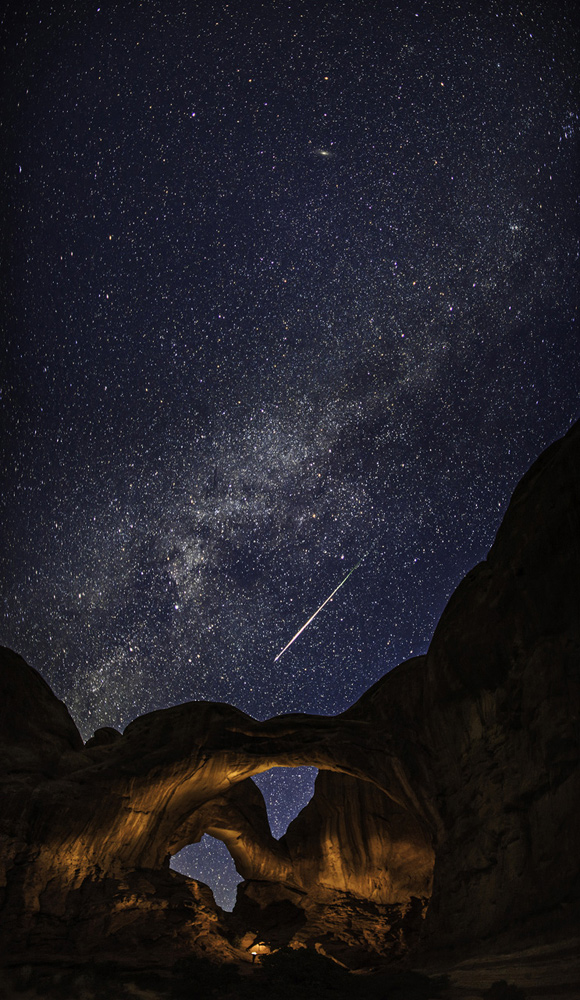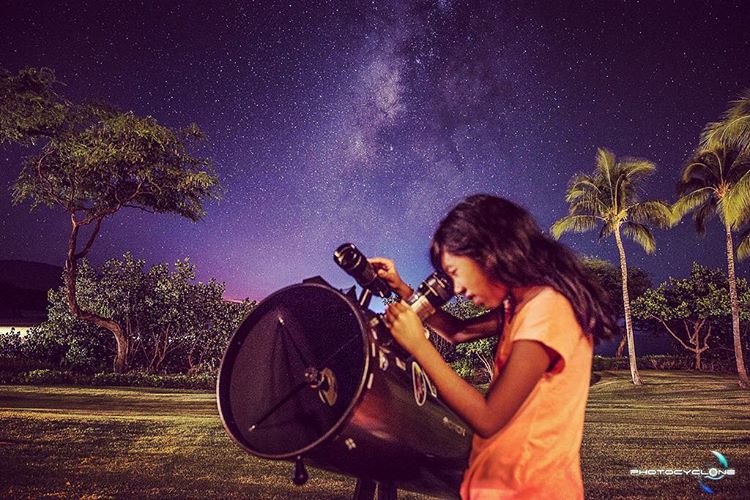5 ways families can enjoy astronomy during the pandemic

The night sky is, and always has been, safe and free.

This article was originally published at The Conversation. The publication contributed the article to Space.com's Expert Voices: Op-Ed & Insights.
Chris Impey, University Distinguished Professor of Astronomy, University of Arizona
This is a challenging time for families. Schools across the U.S. are struggling to provide a meaningful online experience. The coronavirus pandemic has cut off or restricted many entertainment options. As an astronomer, I believe a great way for families to fill the void and have a meaningful science experience in the time of COVID-19 is to turn their attention to the stars they can see right outside their homes.
The night sky is, and always has been, safe and free.
Here are five ways you can get started.
Naked eye

You can see a lot with just your eyes. But the night sky is a strange landscape to most people. Just as you would when traveling somewhere unfamiliar, you’ll need a map. Sky and Telescope – an astronomy news publication – has a guide to get started, with printable sky maps for any month. The objects of the night sky migrate through a complete cycle over the course of a year.
As the Earth moves around the sun, different stars and constellations come into view, so you can enjoy new sights all through the year. You may find it more convenient to have a planisphere, or sky wheel, a rotating plastic disk that shows the night sky for any date and time. They can be bought for US$10-$20 online.
Breaking space news, the latest updates on rocket launches, skywatching events and more!
Spotting planets is trickier since they move among the stars, but there are interactive maps online that show them in the night sky for any time at any location. Your view of the night sky depends on your latitude, so it varies with your specific location. Even easier, there are smartphone apps that take all the work – and maybe also the fun – out of navigating the night sky.
Hold your phone up and the apps identify stars and overlay the constellation shapes. Some respond to voice commands and add detailed information on celestial objects or show the International Space Station as it whizzes overhead.
Binoculars
You probably have a pair of binoculars somewhere in your house. If you don’t or you want an upgrade, new binoculars cost anywhere from $35 to over $500, and the lower end of the range is just fine for stargazing.
Perhaps you use them at concerts or for bird-watching. Well, they’re also perfect for stargazing. There are two numbers on binoculars. They represent the magnification and the lens diameter, so 7 x 50 will magnify an image by a factor of 7 using 50-millimeter lenses. At a dark location, your naked eye will see about 3000 stars. With binoculars this number goes up to 100,000.
The moon is spectacular through binoculars. It’s fun for kids to track a cycle of the moon phases over a month, and then do an activity that shows why the moon has phases.
Small telescopes

If you want to make a bigger commitment to exploring the night sky, consider getting a small telescope. Peering through a telescope opens up a world of star clusters, galaxies and nebulae. You can see Saturn’s rings and the moons of Jupiter.
It’s a good idea to read a guide before you take the plunge. Small telescopes range from a hundred to several thousand dollars, but you can get a good starter one for as little as $200. These basic telescopes usually have a viewfinder attached to help locate objects, but you’ll need sky maps to get the most out of them.
If you can shell out at least $400, you can acquire what are called “GoTo” telescopes that have motors and are computer controlled, where the telescope does the work of finding the deep sky objects. You just have to type the name in or choose from a list. Now you’ll be ready to learn tricks of the trade, like using a red LED flashlight to preserve your night vision, and looking slightly to the side, which lets you see deeper because the cells near the edge of your retina are more sensitive to low light levels.
Online resources
The internet is a great resource for backyard astronomy. You might want to start with a Crash Course in naked-eye astronomy. In addition to reviews of apps and binoculars and telescopes, there are tutorials on how to use your new telescope.
You’ll also want to check out Sky and Telescope’s weekly “Sky at a Glance.” BBC’s Sky at Night magazine has a longer monthly summary of what you can observe.
And if you just want to be inspired by the visual splendor of a dark night sky, there are a number of time-lapse videos you can enjoy.
Dark skies
Hopefully you’re excited about backyard astronomy, but what you can actually see will depend on where you live.
For tens of thousands of years, the night sky was a familiar friend to our ancestors, and they used it to navigate, tell time and project their myths into the stars and constellations. But the glories of the night sky have been steadily eroded by industrial activity and artificial lights.
[The Conversation’s science, health and technology editors pick their favorite stories. Weekly on Wednesdays.]
You can see recent measures of night sky brightness in a zoomable map of the U.S., where it’s clearly harder to find a dark sky in the eastern half of the country.
To measure how sky brightness affects what you can see, amateur astronomers use something called the Bortle scale, where 9 is an inner city and 1 is a pristine wilderness. Light pollution is the effect of artificial lighting on the night sky, and you can also see how it affects the familiar Big Dipper and Orion constellations.
National parks are great places to enjoy the sky because they try to protect it from artificial lights, and in normal times many national parks offer astronomy programs. Many are also beginning to resume those programs with COVID-19 restrictions in place.
If you want to contribute to the effort to raise awareness of light pollution by monitoring the sky brightness where you live, the U.S. national observatories run a project called “Globe at Night.”
Anyone can collect data and help a research project by doing citizen science, which is when non-scientists gather data and contribute to a collective research effort. You can become a citizen scientist and submit your own observations from a computer or smartphone.
This article is republished from The Conversation under a Creative Commons license. Read the original article.
Follow all of the Expert Voices issues and debates — and become part of the discussion — on Facebook and Twitter. The views expressed are those of the author and do not necessarily reflect the views of the publisher.
